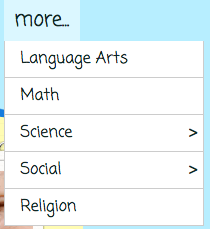In creating my grade eight short story unit for my PSIII practicum, I wanted to give students the opportunity to analyze various literary genres. In the planning process, I initially picked three short stories from their textbooks, as well as a short film called “The Porcelain Unicorn.”Although I had chosen two forms of literary genres, I wanted to add something different.
Upon browsing my Twitter feed one day, I came across a post that discussed how the PS3 video game “Portal 2” was used in the ELA classroom. I have to admit, when I read this post my heart started pounding in excitement as I thought of the possibility of integrating this game into my short story unit. The post led me to a website called “Teach with Portals“, a resource website for educators who want to integrate the game into the classroom. There are blog posts, lesson plans, a forum and wiki that all discuss the educational value of using Portal.
I downloaded a Language Arts file from their website called “Influence of Setting on Characters in Portal 2“. This resource, created by David Hunter, included lesson plans and rubrics that associate with ELA SLO 2.2.11 (identify ways that characters can be developed, and discuss how character, plot and setting are interconnected and mutually supportive) and 2.2.12 (identify and discuss how word choice and order, figurative language, plot, setting and character work together to create mood and tone). Because of this curriculum tie to the Program of Studies, as well as the engagement factor in incorporating this game into the classroom, I wanted to try it out with my grade eight students.
I was very surprised – and excited – to find out that my PS3 connects into the SMART Board. As a gamer, I thought this was awesome (I wish I had a big screen like that to play my video games!) I tested the game and found that the audio and video quality were great.

I could feel the excitement in the air once students started to walk into the classroom. Students were inquisitive, asking why there was a PS3 in the classroom. Once I got students settled, I asked students the following questions:
- Do stories have to be written?
- Can video games tell stories?
- Have you ever played a video game that also tells a good story?
Students discussed these questions with their desk partner; I also picked name sticks to ask individuals what their response was to these questions. After this discussion, I told students about the importance of analyzing various forms of stories and how we were going to analyze the story in a particular video game called Portal 2.
After giving students the worksheets, I played the video game while walking around and monitoring the class (thank you cordless controller!) I asked students the worksheet questions while playing. We discussed them as a class and students wrote down their answer to the questions. Here are some sample questions from the handout:
- Are the characters in conflict from the setting? Does the setting keep them from getting what they want?
- Write about all the ways that you think the setting influences the characters. What things do the characters do because of the setting they are in?
Overall, students were engaged during the lesson and based on formative assessment, they learned how story elements are mutually supportive. I was also pleased to read in the metacognitive reflections at the end of the unit that many of the students’ highlights was the Portal 2 activity.
Although I found success in using this game for ELA, there are a few points to consider using this in the classroom. One is that many students wanted to play. My heart went out to those who wanted to have turns in playing this game. However, I found that by letting a student play, the focus went to how to play the game instead of focusing on the learning objective of the lesson. One solution is by downloading Steam for schools (Steam is a gaming platform distributed by the creator, Valve). On the “Teach with Portals” website, Valve shows their understanding of the value of including game-based learning in the classroom by giving schools the opportunity to download Portal for their school computers for free. I think the Portal 2 lesson would have been even more effective if the students had the opportunity to play the game with the Steam software on the computers. I think this initiative by Valve is great – all students can then play. I also think it is smart on Valve’s part in the way that they are promoting this game. Only a couple of my grade eight students knew of the game Portal; however, by the end of that class, many of them were asking me how much it was and where they can buy it.
Overall, the students and I had a great experience in using the video game Portal 2 in the ELA classroom. I look forward to finding more ways in integrate various other technologies in the classroom.















